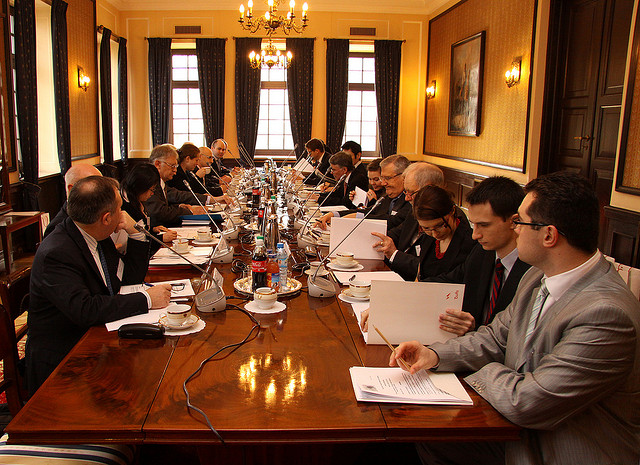Breaking the Ice: The Arctic Joint Communication Released
External Relations 9 May 2016In recent years, the Arctic has played a much more prominent role in climate change. The peculiar nature of the region, as well as the direct consequences of climate change, which affect weather everywhere in the world, can be listed as main reasons.
According to scientists, Arctic also contributes to climate change, due to the gradual release of methane gases as the region warms up. This is not an easy issue to deal with, and several international institutions and forums have been established to facilitate international cooperation on the joint management of the Arctic region.
On 27 April, Federica Mogherini, High Representative of the Union for Foreign Affairs & Security Policy, officially delivered a speech called “An integrated European Union policy for the Arctic”. This is about to open new political streams, where EU has to play a prominent role, given the growing geo-strategical relevance of the area.
The work has been conducted by the Commission itself, Mogherini said, together with Paavo Lipponen, former Finnish Prime Minister, who strongly contributed by submitting a paper, and highlighting the fact that Finland will chair the Arctic Council in 2017.
The European policy-making regarding the Arctic has started several years ago. Nowadays, a truly consistent policy, and a well-functioning integrated approach have seen the light of the day. The EU Arctic policy will finally put together different programmes and merge various policies, ranging from the environment to maritime affairs and fisheries.
The European action will consist of three main pillars.
In the first part, the European action will deal with climate change and environmental issue. This priority aims at ensuring continuity with the Paris Agreement, signed in New York on climate change, since the European Union played a key role in it.
For more information on the EU and Climate Change, read “The Year For EU to Change Climate Change.”
The second pillar of the common Arctic policy is essentially economically and socially-based. In saying this, we mean that the EU has to ensure a sustainable development of the Arctic, not only by fostering the economic potential of the region, but also by seriously taking into account the conditions of the indigenous peoples living there.
Finally, the third pillar of this integrated policy reconsiders the Arctic as a key strategic region for the entire European Foreign and Security Policy. The Arctic represents the only place in the world where three continents and major global players meet, such as Russia, the United States, Canada, the European Union, as well as several other non-EU countries that have strongly cooperated in implementing this common policy.
The EU Approach towards the Arctic
The idea coming from Brussels’ Institutions is to keep working with all relevant players, engaging and tightening relations with each one of them, from just those countries that have territories in the Arctic to all other global players that have increased interest in the Arctic, such as China.
So, ranging on many different aspects, this comprehensive Joint Communication identifies 39 actions, focusing on those issues considered of relevance by the European Union and its Arctic-allies.
The idea to come back to Arctic with a serious and consistent European policy has started in 2014, when both the Council of the European Union and the European Parliament asked the Commission to develop such a coherent framework for EU action in the Arctic.



